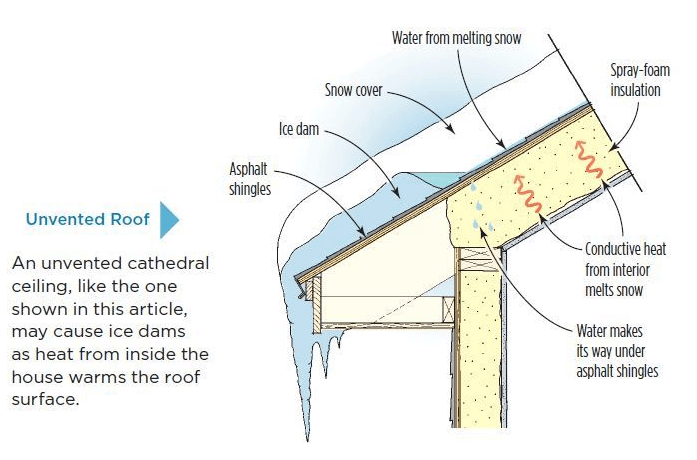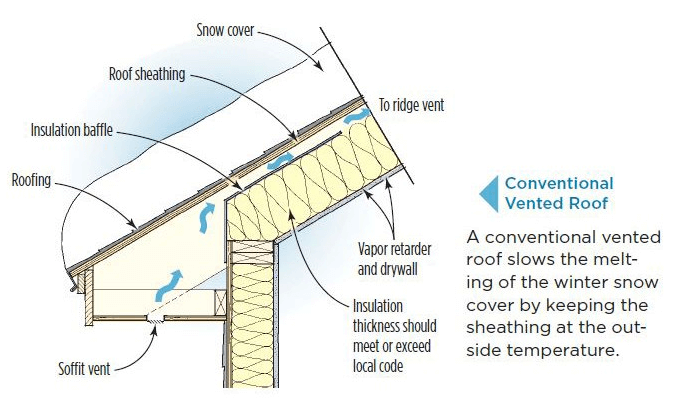Preventing Ice Dams
Preventing Ice Dams
The following content courtesy of The Journal of Light Construction.
Ice dams are often viewed as a winter-time exterior problem to be solved with ice melting salts and heat tape. But such solutions risk damage to the roof, or even fire, and don’t solve the cause of the problem.
Many builders also think that a peel-and-stick at the roof edge is the solution. This may avoid a leak to the interior from the snow melt, but it will do nothing to solve the ice dam.
Ice dams are typically an insulation and air-sealing problem first. The cause of the dam is heat escaping from the interior, which melts the snow. The melt water then refreezes at the eaves, creating a “dam” that causes water to back up the roof, increasing the chance of a roof leak.

Roof ventilation can overcome the problem and that is a primary reason vented roofs have been required by building codes. (Keeping roofing materials cooler in hot weather is the other main reason.)

The solution to any ice dam is two-fold:
1) If possible, fix any air leaks and add more insulation to avoid excessive heat loss.
2) Create a cold roof by adding roof ventilation.
Air leakage through the ceiling is a prime source of heat loss that should be investigated first. Kitchen soffits along exterior walls are a common culprit. Low-slope roofs may not have sufficient insulation near exterior walls. And cathedral ceilings may not have sufficient insulation anywhere. In these cases roof ventilation is paramount.

